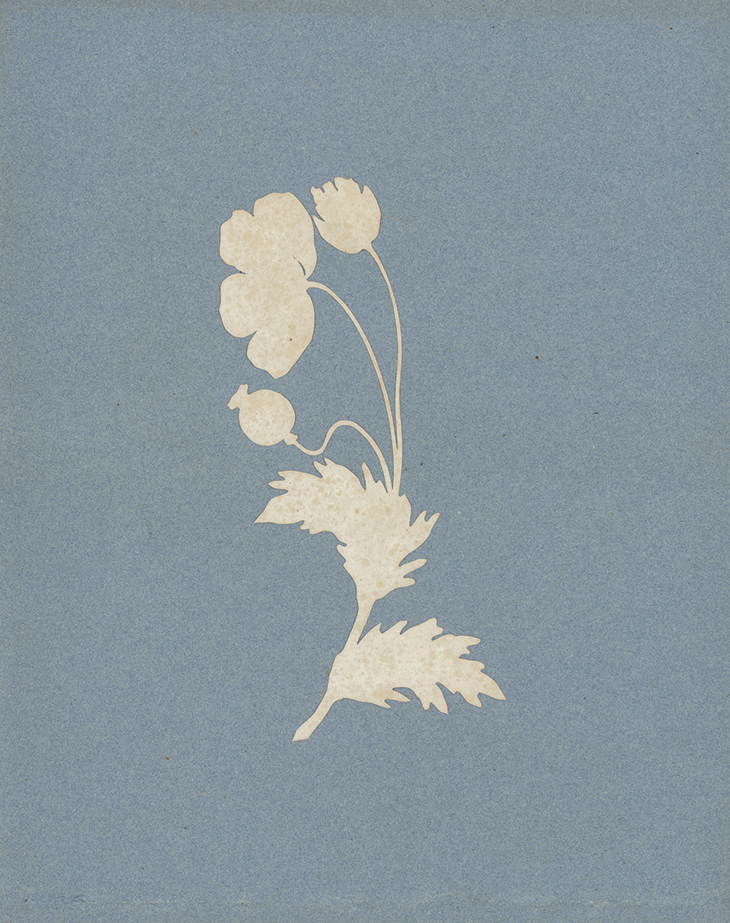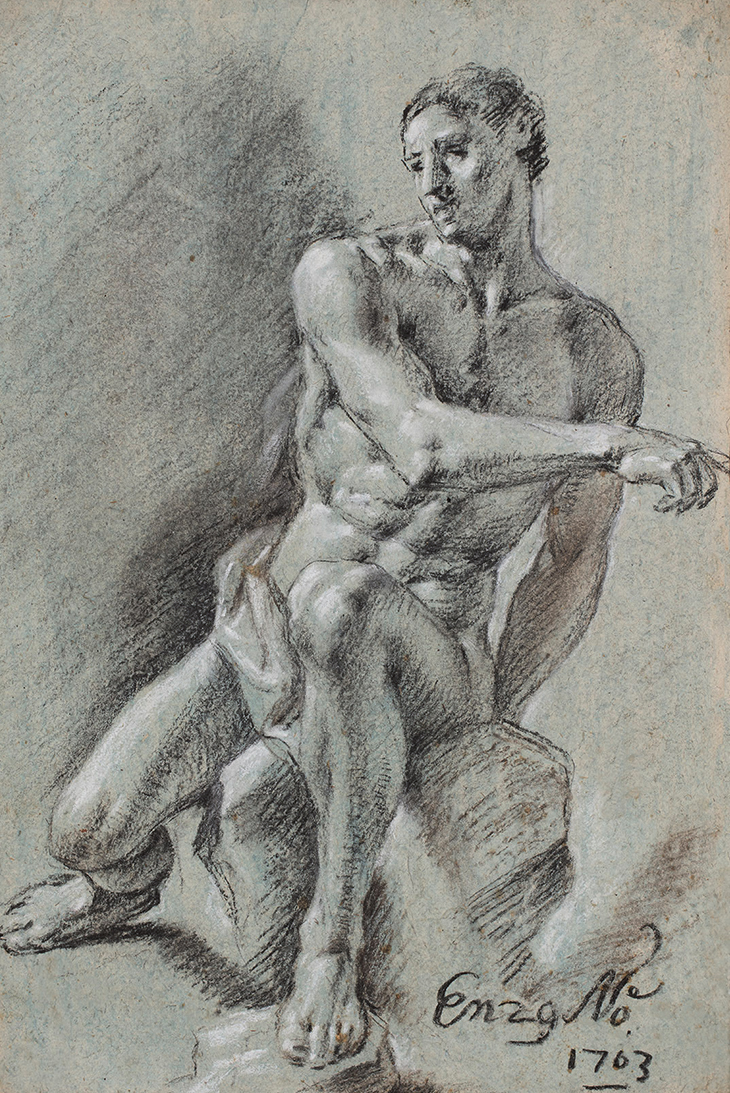‘Drawing is the artist’s most direct and spontaneous expression,’ said Degas, ‘a species of writing: it reveals, better than does painting, his true personality.’ Every spring the Salon du Dessin in Paris calls attention to some of the finest examples of that form of expression and, with a select group of only 39 exhibitors, is perfectly suited to the intimacy of its specialist medium. The 19th-century Palais Brongniart in the Place de la Bourse provides an elegant venue and one that, as the historical home of the city’s stock exchange, is no stranger to trade. In the building’s early days, dealers on the floor were required to be French citizens; the Salon du Dessin is an international affair, however, with galleries from around Europe and five, this year, from the United States.
Heartland of drawing devotees that it is, Paris has nevertheless produced half the dealers, including the fair’s president, Louis de Bayser, an expert in drawings from the 17th to 19th centuries. He is keen, he says, to have new people coming in, on both the exhibitor and visitor side. ‘I think for new collectors it’s a way you can really deal with the history of art as a whole. The centuries between artists are less visible than with painting or sculpture; when you have a black-chalk or pen-and-ink sketch from the 16th century, it can sometimes be very close to 19th-century Romantic art; so you have a lot of people collecting drawings from the early 16th century up to today.’
Among the works that Galerie de Bayser will show at the Salon is a dark ink-and-wash depiction of a boat tossed at sea, by Victor Hugo (€150,000). Done in 1856 during his self-imposed exile in Guernsey (Hugo was an outspoken critic of Napoleon III), it’s a typically atmospheric drawing by the writer-artist, who is known to have used soot, coal dust, coffee grounds, and perhaps even blood, when he couldn’t get hold of ink. This one makes use of brown ink and is, De Bayser says, ‘a little bit special’, having been unusually well preserved in the personal collection of Paul Meurice, Hugo’s friend and the founder of the Maison de Victor Hugo (as it happens, one of the many Paris institutions participating in the fair’s satellite events). The drawing comes directly from Meurice’s descendants.

Poppy Flowers with a Capsule and Leaves (c. 1800), Philipp Otto Runge. Martin Moeller & Cie (price on application)
For Martin Moeller, who is returning to the fair for the tenth time, the Salon provides an opportunity to exhibit the work of artists celebrated in Germany but not, so far, beyond. The works on his stand span 150 years, and include a group of powerful and often disturbing drawings by Richard Müller, one-time teacher of George Grosz, and a delicate 18th-century paper cut-out of a poppy by Philipp Otto Runge (price on application). As Moeller explains, ‘Runge is a very interesting and adored artist from that period; but 95 per cent of his work is at the [Kunsthalle] museum in Hamburg.’
Flying the flag for Belgian art, meanwhile, is the Brussels-based Lancz Gallery, one of four newcomers to the fair this year. It will bring work by James Ensor, but the ‘masterpiece of our booth’, says owner Patrick Lancz, is La Verrière (1909; price on application) by Ensor’s fellow Ostend-dweller, the Symbolist painter and graphic artist Léon Spilliaert. Executed in India ink, brush and coloured pencil on paper, the work depicts an interior section of the glazed porch of the family house, which also served as Spilliaert’s studio. ‘He mostly depicts dark atmospheres where an impression of worrying strangeness reigns,’ Lancz says, ‘and you can observe that in this piece.’
Of an altogether different atmosphere is a work the young Rotterdam-based dealer Onno van Seggelen calls ‘a spectacular find’. Rediscovered last year having been documented as missing, the bucolic Fruit Harvest (September), dated 1670 (€55,000), is one of a series of 12 months by Herman Saftleven, and was owned by Johan Goll van Franckenstein, an important 18th-century collector of Dutch Old Master drawings. Van Seggelen was, he says, ‘more than happy’ to return to the fair with other Old Masters and 19th-century Nordic School drawings after a highly successful first showing last year: ‘I had clients coming over from New York, who bought drawings, and I sold an extremely rare monotype by Karel Dujardin to the National Gallery of Art in Washington.’

Academic Study (1703), Juan Antonio Conchillos y Falcó. Artur Ramon Art ($36,000)
Artur Ramon Art from Barcelona is one of two Spanish galleries attending this year’s Salon, and its offerings include a drawing by Picasso and work by the Valencian artist Juan Antonio Conchillos y Falcó. A drawing from 1703 in charcoal and white chalk is an elegant example of the academia genre for which Conchillos is known ($36,000). These studies of the male body demonstrate his mastery of anatomy, a skill he honed by sketching the casts of classical sculptures in the Alcázar palace, objects brought from Rome by Velázquez on behalf of Philip IV.
Returning to the fair after an absence of several years, the Viennese gallery Wienerroither & Kohlbacher will bring works by Schiele, Klimt, Kokoschka and Kubin. Schiele’s Standing Woman Covering Face with Both Hands (1911; €1.9m) was exhibited at the recent monographic show at the Fondation Louis Vuitton. On how recent exhibitions dedicated to the Viennese artists might affect the market for their work, co-owner Lui Wienerroither comments: ‘I think that museum exhibitions only have a long-term effect [… ]But the French have always been very interested in Klimt and Schiele.’
Wienerroither is one of several dealers to mention the unique atmosphere of the Salon, a mix of the friendly and scholarly. An impressive talks programme continues last year’s symposium theme of ‘Performing Arts’, and is a valuable research opportunity for the field. As De Bayser says, ‘Spending two years on a theme allows us to go quite deeply into very small specialist areas, which is interesting because they can reveal part of a period or a particular artist.’ Among the more intriguing lines of enquiry this year are the watery Venetian spectacles laid on for Napoleon, and drawings as a source for the study of fireworks. It promises to be an illuminating few days.
Salon du Dessin takes place at Palais Brongniart, Paris, from 27 March–
1 April.
From the March 2019 issue of Apollo. Preview and subscribe here.
Unlimited access from just $16 every 3 months
Subscribe to get unlimited and exclusive access to the top art stories, interviews and exhibition reviews.














![Masterpiece [Re]discovery 2022. Photo: Ben Fisher Photography, courtesy of Masterpiece London](http://zephr.apollo-magazine.com/wp-content/uploads/2022/07/MPL2022_4263.jpg)
The threat to Sudan’s cultural heritage